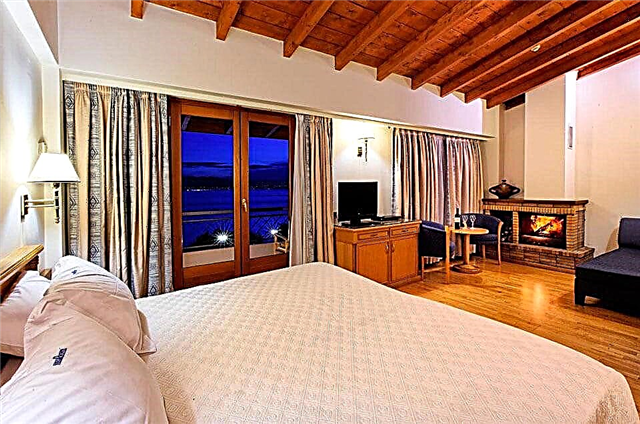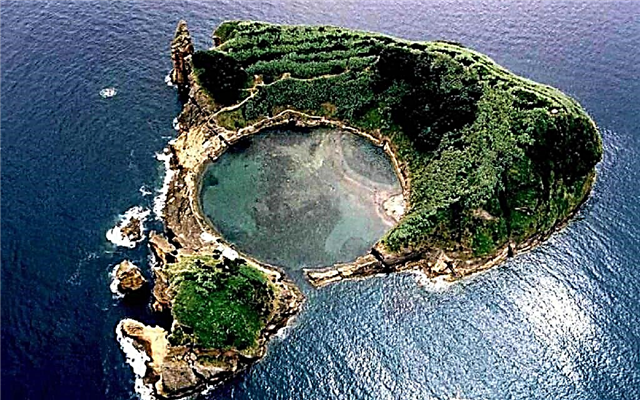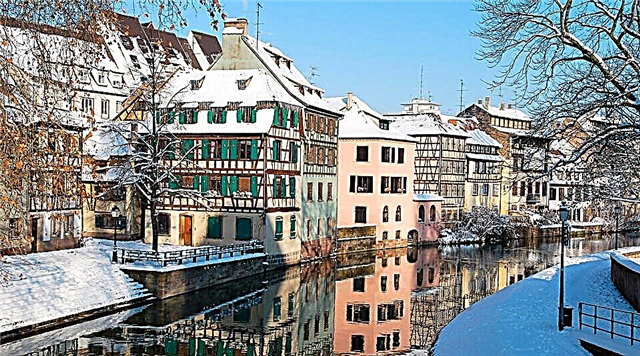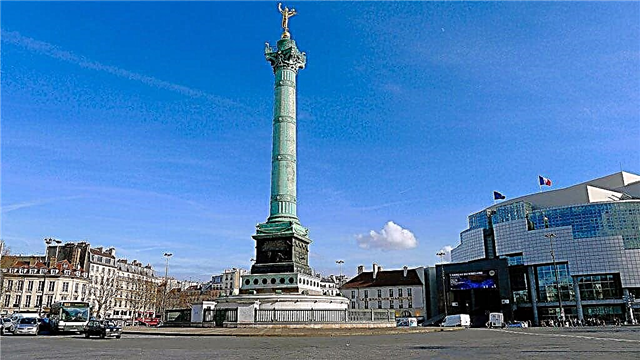Only the lazy has not heard about the famous fortress under the sonorous name of Bastille, but today in its place you can find only the eponymous square, which gladly welcomes tens of thousands of tourists, offering many entertainments.
History

In the XIV century, during the Hundred Years War, Paris was in dire need of protection. Charles V decided to build an impregnable fortress to protect the city. Its original name was “Chastel Saint-Antoine”, but after some time the Parisians christened the fortress with the sonorous “la Bastille”, which is logical, because from the French “Bastille” means “tower” or “fortress”. Having served the troops, by the end of the Hundred Years War, the royal treasury was located in the Bastille. However, with the permission of King Louis XIII, Cardinal Richelieu changed this. With his light hand, the Bastille became a prison.
First of all, traitors to the crown, as well as authors of overly explicit opuses, got there. However, their imprisonment can hardly be called terrible, and modern criminals fit the envy of the then lawbreakers. They were allowed to take food, clothing, furniture, books and even servants to the Bastille. Over time, however, more and more ordinary low-income people ended up in prison, which led to the spread of infectious diseases. During the French Revolution, the Bastille was taken by storm in order to free the rebels imprisoned in it at that time.
By the end of the 18th century, the Bastille was completely destroyed, and all that we have today is just scraps of past splendor. In 1792, on the site of an impregnable fortress, a spacious square appeared, in the center of which it was planned to erect a column - a symbol of freedom. The first stone was laid by Pierre-Francois Palois, but the construction was never completed, and in 1793 a fountain was erected on this site.
In 1808, Napoleon was seriously concerned with the improvement of some areas of Paris. For the Place de la Bastille, he conceived something original - to erect a monument in the shape of an elephant. According to the plan, it was supposed to be twenty-four meters high, cast from bronze from Spanish cannons. However, only a full-scale plaster model was built, which was demolished in 1846. In 1833, Louis-Philippe ordered the construction of the July Column, which was inaugurated in 1840.
Square today

Today, La place de la Bastille is a stunning historic site with open markets, many shops, nightlife, a marina and a magnificent opera house. The largest open market is open on Thursdays and Sundays, occupying a part of the park in the north of the square.
Along Richard-Lenoir Boulevard, you can buy the freshest fruit, mouth-watering meats, homemade cheeses and homemade bread, along with clothes, dishes, souvenirs and other little things. During excavations for the metro line in 1899, the remains of one of the fort's towers were found, which were transferred to Place Henri Galli. Now, on the original site of the fort, cafes and offices of small companies are comfortably located.
What to see
Dozens of streets of Paris intertwine on Place de la Bastille, it is located on the border of several arrondissements, and every pebble is steeped in great history. Thanks to Palois, a sign “From now on they dance here” appeared here, which eloquently hints that the square is the main place for entertainment. Of the main attractions that every tourist must see, the following are distinguished:
- Opera theatre
- Port Arsenal
- July Column
- Metro station "Bastille"
- July Column
In the heart of the Place de la Bastille is the famous July Column, fifty-two meters high and weighing one hundred and seventy tons, cast in steel and bronze. The project was carried out by the architect Jean-Antoine Alavuan in collaboration with Eugene Viollet-le-Duc. In their work, they were inspired by Trajan's magnificent Column in Rome.
Before the July Column, in the center of the square was a model of an elephant made of plaster and wood, which Napoleon intended to replace with a bronze one. But the Empire collapsed before he realized this ambitious plan. In addition, street hedgehogs and hordes of rats, the main carriers of infection, managed to settle in the elephant.
The July column was built as part of the revolution of 1830, in particular, the three days of the battle called “Three Glorious Days”, which led to the overthrow of Charles X and the rise to power of Louis-Phillip. Five hundred and four people rested in the foundation of the column, who died for the good of the revolution. Later, these remains were moved. Their names are engraved on the surface of the monument. The top of the July Column is decorated with a gilded statue of the "Genius of Liberty" - the work of Dumont. A star burns in the forehead of the statue, a torch in one hand, and a broken chain of shackles in the other. There is a spiral staircase inside the column, but ordinary visitors are not allowed to climb up.
Opera Bastille

Opera Bastille is a modern opera house, one of the most famous and popular in Paris. It opened in 1989 as part of the Grands Travaux project with the assistance of President François Mitterrand. Along with the "old man", the great opera Granier, the Bastille opera is the main object of the Paris National Opera. However, while Granier presents mixed performances from opera and ballet, in the Opera Bastille, opera performances are separate from symphonic and ballet performances.
The building itself has a main stage with 2,703 seats, as well as a small concert and chamber halls. So that the new building does not stand out too much from the architectural ensemble of the square, the left side of the facade was partially hidden behind older and smaller buildings, which gives the impression that the opera house has been here for several centuries. You can enter the foyer directly from the square, although a monumental external staircase and an underground entrance from the metro were originally built, which were subsequently closed.
Bastille fortress
Built at the dawn of the fourteenth century and destroyed after the Great French Revolution, the fortress is today only a memory of the past. In its place, a famous square was deployed, and only records in the archives, drawings and old photographs remained about the structure itself. But once the fortress not only protected the royal power from invaders, but later became a prison for political oppositionists and overly extravagant writers.
Her captives were Count Cagliostro, Marquis de Sade, Voltaire, and, of course, a mysterious man in an iron mask, whose origin is still shrouded in an aura of mystery. When the fortress was destroyed, local craftsmen used small stones to make souvenirs, and large stones were used to build some objects in Paris. And Bastille Day is celebrated annually by the French in July and is officially recognized as a national holiday.
Arsenal Port

The port was named after an arsenal that had been located on this very spot before him between the sixteenth and nineteenth centuries. At a time when the Bastille fortress had not yet been destroyed, a moat was dug around it, directly connected with the Seine.
After the destruction of the castle during the French Revolution in 1789, the canal connecting the moat and the Seine was excavated even wider. Now this is where the port is located. At the turn of the XIX - XX centuries, the port of Arsenal was given over to commercial needs. It was here that the wheat, timber and wine necessary for the city were unloaded. However, in 1983, supplies were redirected, and the port itself began to be used for urban leisure.
Today it is a lively, medium-sized marina that can accommodate up to 180 pleasure boats. The pedestrian bridge, built in 1895, crosses the canal approximately in the middle, which allows you to view all moored ships from it.In the western part of the port there is a cozy, small garden called “Jardin de l’Arsenal”, where you can relax a little, and children can play on a specially equipped playground. At the very end of the park there is a small café with a terrace serving delicious coffee.
Metro station "Bastille"
The Bastille metro station itself is a notable attraction. First, its design is unique. The platforms on the first line are semi-underground - they go inland, but at the same time above the level of the Arsenal port channel. Secondly, the walls of the station are decorated with magnificent drawings depicting scenes of the capture of the Bastille. It is strikingly different from the rest of the gloomy and not too clean Parisian metro stations.
Where is it located and how to get there
Address: Place de la Bastille, 75011 Paris, France
The easiest and most affordable way to find the area is by metro, the station of the same name “Bastille” (lines M1, M5 or M8).
You can also take the bus numbered 86, 20, 65, 76, 69, 91.











